Hiking Volcan Acatenango near Antigua, Guatemala was one of the most challenging hikes that I’ve done in a long time.
Leg-pumping, and physically taxing, Acatenango isn’t to be taken lightly, but the view upon completion makes it all worthwhile.
It’s only two days and a night, what’s so hard about it?
Technically speaking, hiking Volcan de Acatenango is easy. What makes it so difficult is the steep incline that you will be ascending in a relatively short amount of time. You might not even notice how steep it is… Until the following morning when you’re about halfway back to the bottom.
Volcan de Acatenango at a glance:
- Elevation at summit: 13,044 feet (3,976 meters)
- Elevation gain: 5,150 feet (1,570 meters)
- Distance covered: 8.6 miles (13.8 km)
- Difficulty rating: Difficult
- Cost: There is a park entrance fee of Q50, plus a camping fee of Q60. Both of which are usually included in the cost of your tour.
- Tour Cost: $65 which includes entry, guides, equipment, transport, and four meals.
- Tips: And as always, don’t forget to tip your guide. The average is considered to be 10% which is quite low in my opinion. Have a heart. These guides work hard!
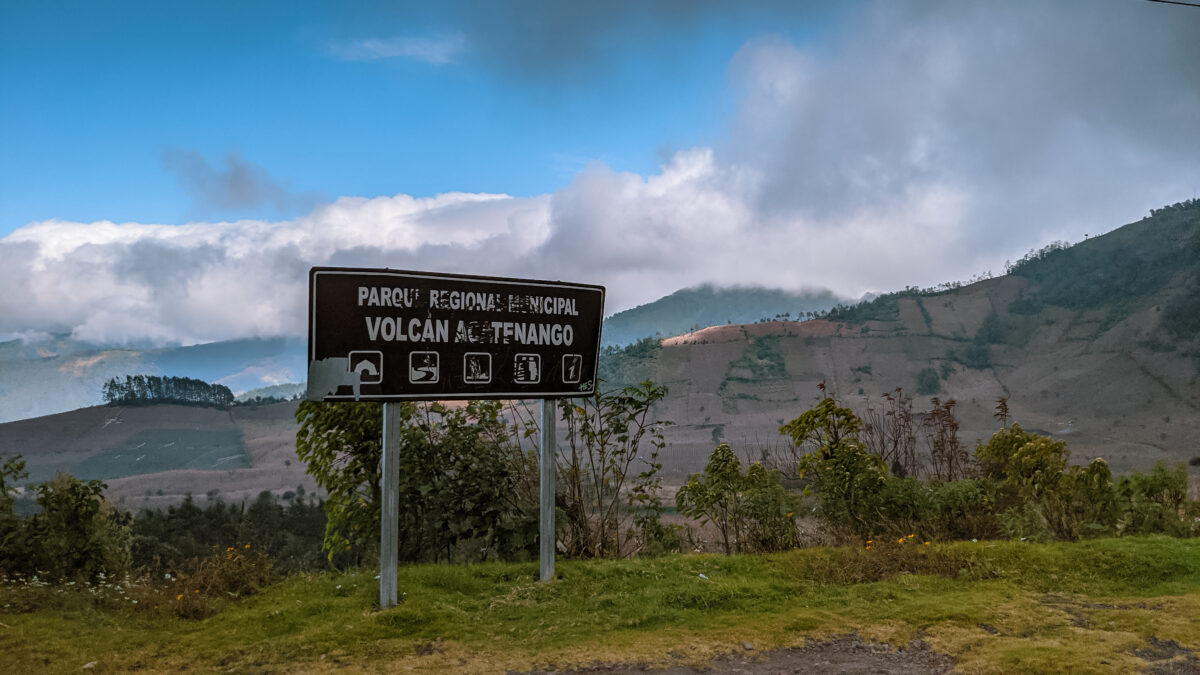
Welcome to Volcan de Acatenango…. on the other side of the road.
Acatenango hits you with an elevation gain of 5,150 feet in only 4-6 hours, depending on your pace. For comparison, the largest single-day elevation gain I encountered on my eight-day Mount Kilimanjaro Trek was summit night which, was only a 4,045 foot gain in about eight or nine hours.
Was hiking Volcan Acatenango more difficult than climbing Mount Kilimanjaro? No, not overall when taken as a whole, but I’d say this overnight hike was physically more difficult than any individual leg of Kilimanjaro.
Sure, the summit night on Kilimanjaro is a mental battle. The altitude is much higher, you’re freezing, and are as exhausted as you’ve ever been, but it wasn’t the same lactic acid leg explosion.
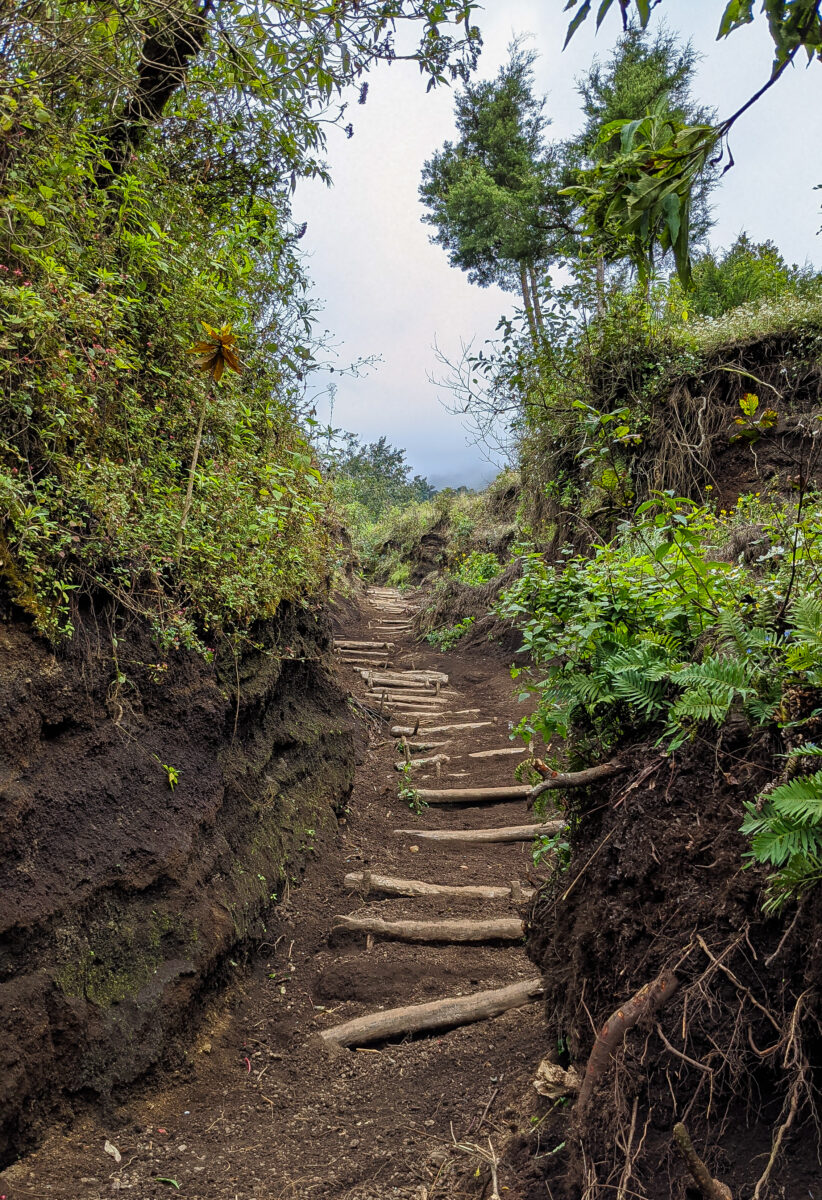
There are the occasional stairs, but they’re deceptively steep.
Tour Operators
There are many to choose from for hiking Volcan de Acatenango, but the tour operator I recommend is Due South Travels.
At $65.00 per hiker, they are competitively priced.
They provide you with a qualified guide, have all of the rental gear you may need, and provide you with four meals as opposed to the usual three.
They also have a well-maintained camp with very high-quality huts for sleeping.
*This is in stark opposition to the operator I used which had us sleeping in small tents beneath a tarp. The operator I used also didn’t provide the advertised English-speaking guide, and we were unable to rent walking sticks.
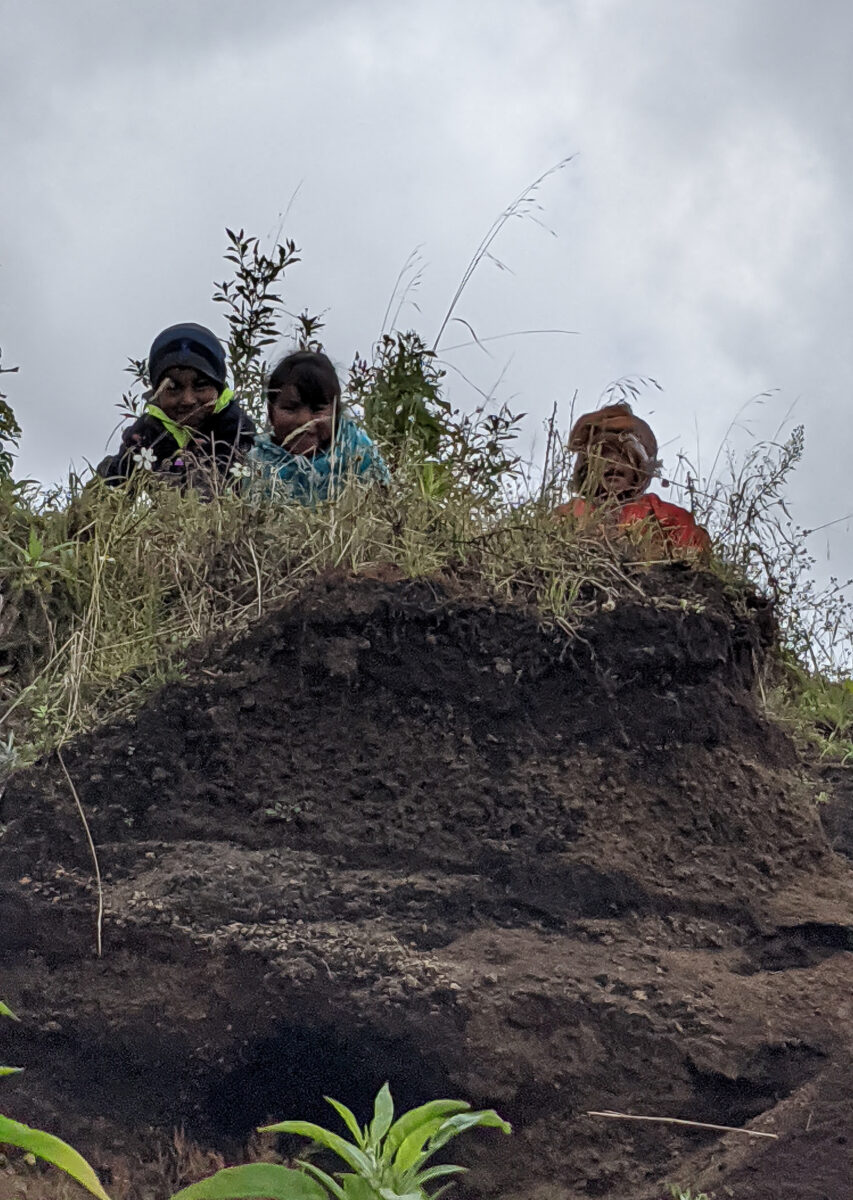
Be careful, Volcan de Acatenango is crawling with ninjas.
Most treks start early
Blessedly, Due South Travels, starts with breakfast in Antigua at 8:00 AM and doesn’t leave town until 9:15 AM.
Most other treks will have you departing at a more crisp 7:00 AM. It’s your call, but personally, I prefer the later departure. Extra sleep, you’re not missing anything by starting at 9, and you’ll still be at the camp well before sunset.
I’ll get up early while I’m traveling because you’ve got to do what you’ve got to do, but for the most part, I’m not a morning person.
If you’re feeling gutsy and want to try the hike in a condensed single day, up and down, you’ll be looking at a 5:00 AM start.
I personally wouldn’t recommend it because camping was an experience all unto itself!
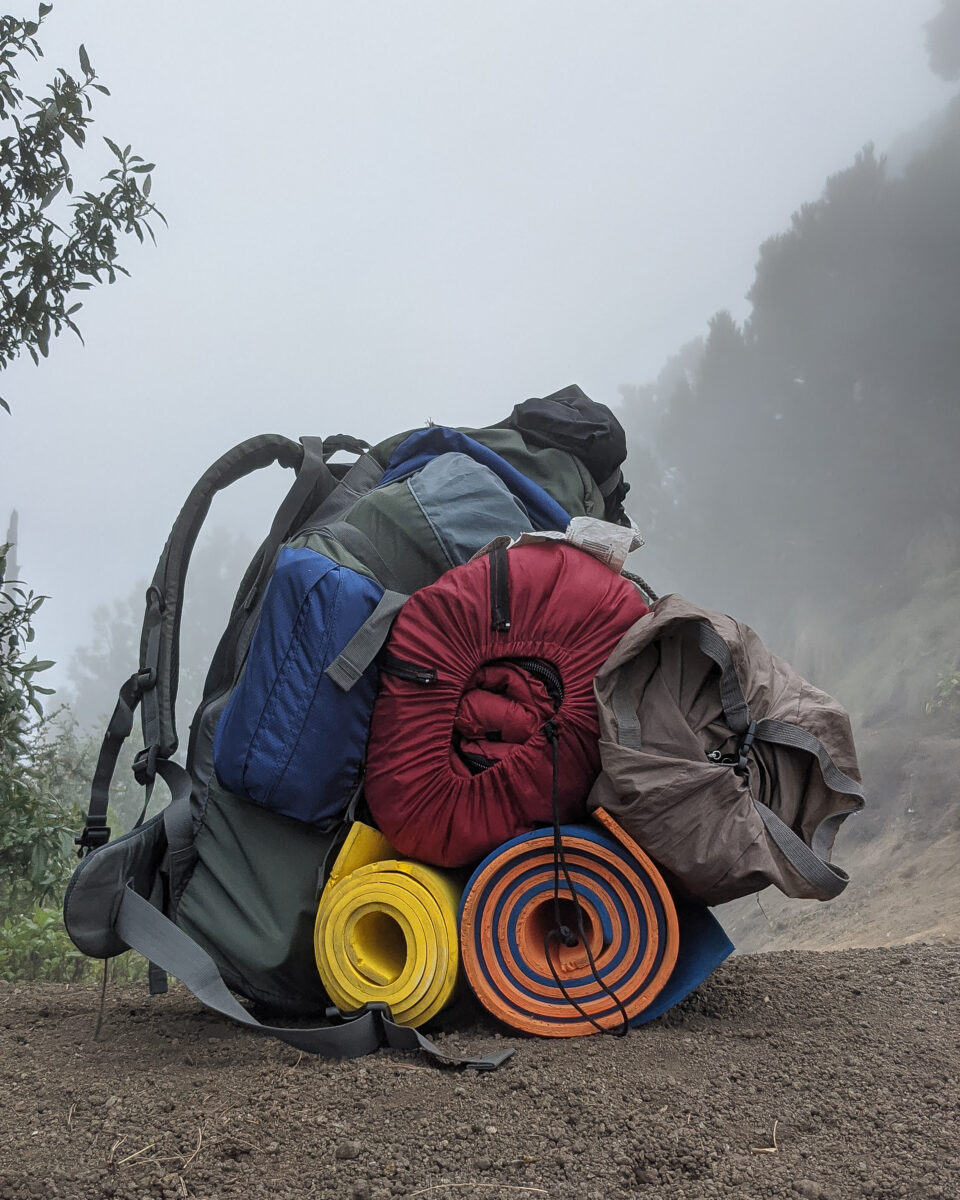
Our guide carried a heavy bag! They deserve a good tip!
A group of three… that became six
Since I went during peak COVID, my group was very small. Two climbers, one guide, and a dog that followed us to the top.
Unfortunately, with how popular the hike is, I wouldn’t count on such small groups anymore. You can usually expect a group of around twelve with more than one guide, plus any other groups you come across along the way.
We did encounter another group on the way up. They were another small party of three so we stuck together and ended up sharing the same campsite. Heading down, however, they easily left us in the dust and we didn’t see anyone else until we got near the bottom where it began to get crowded.
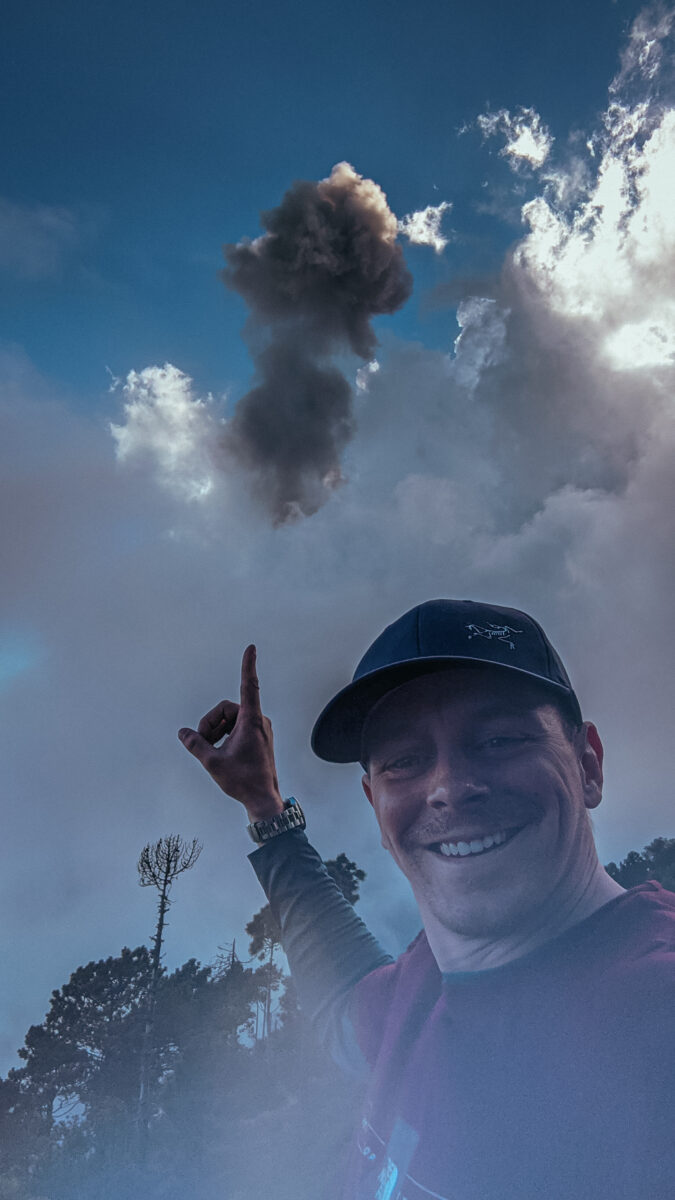
Getting excited for the first time we were able to see the plume of volcanic ash above Volcan de Fuego. As you may notice, I had already cracked my phone’s camera by this point.
What gear do you need?
The required gear for hiking Volcan de Acatenango is pretty simple, but it will vary depending on what operator you choose, so be sure to get a detailed list of what they do and do not provide. Below you’ll find what I brought.
The first thing you need is a backpack. I brought my Osprey Kestrel 48L bag and felt that this was a perfect size for me. It fit everything I needed and still had plenty of leftover space.
Next, you’ll need to bring at least four liters of water which you carry yourself. Four liters of water sounds heavy, but there are no refill areas along the way and staying hydrated is very important as it helps with the altitude, as well as your general health.
Any extra snacks are on you to secure and carry. I usually try to bring a few chocolate bars, preferably with almonds in them. Chocolate is a traditional alpine staple and serves as a great pick-me-up.
If you don’t like chocolate, other types of candy can suffice, just whatever you bring, remember that it stands a high probability of being crushed to bits in your bag… like my Cheez-Its on Mount Kilimanjaro that I had to eat with a spoon.
While our guide did provide toilet paper, it wouldn’t hurt to bring a little extra for yourself, just in case.
The final thing you’ll need to bring is your own toiletries. I am a huge fan of these Sea to Summit pocket hand soaps. Overkill? Maybe. But if your dinner at the top of the volcano is spaghetti and it gets all over your hands, well, good luck with that!
You can tough it out, but you may also want to pack toothpaste and a toothbrush. I’m big on personal hygiene, so these were both must-haves for me.
I also recommend bringing your own headlamp, especially if you plan to reach the summit. Headlamps were available to rent, but I’ve never had any luck with rentals. They’re always too old or weak for my liking. I brought my Black Diamond Storm.
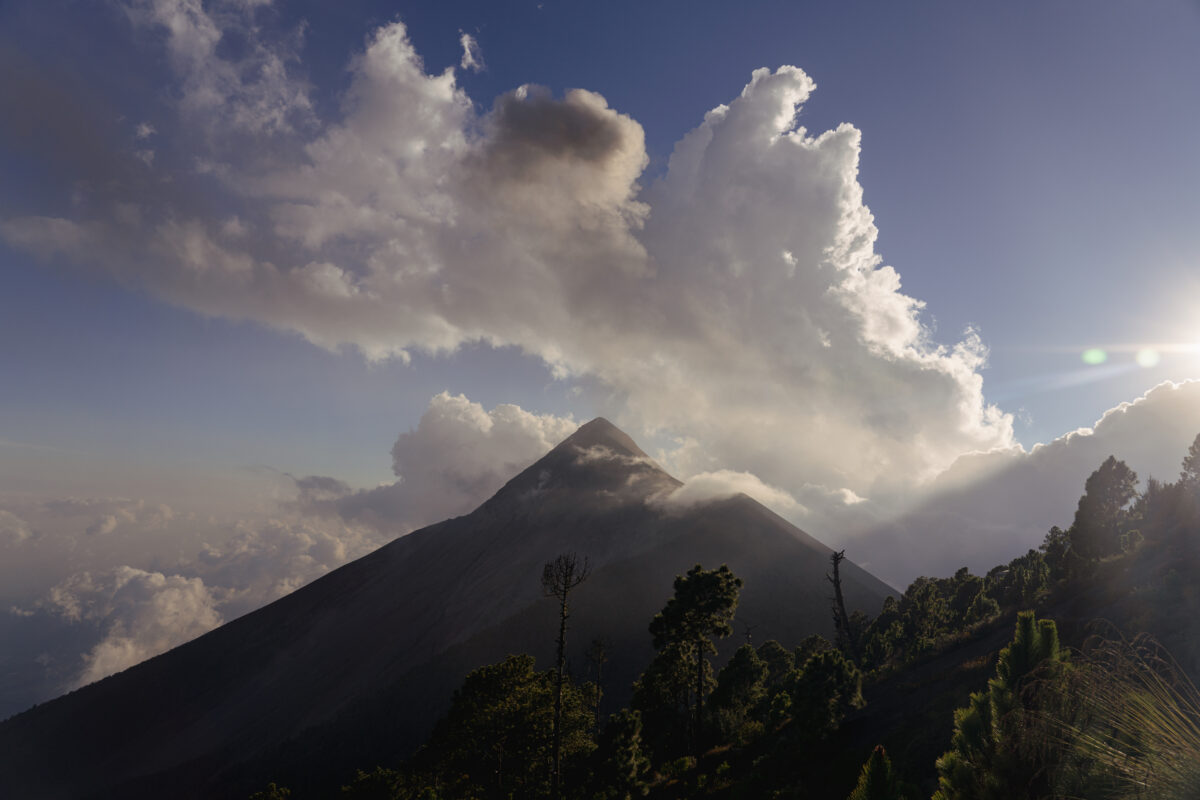
What to wear?
Standard hiking clothing will see you through this. For me, it was one pair of pants, one t-shirt, one long-sleeve shirt, one jacket, wool socks, a warm hat, and a pair of sneakers.
Hiking boots would have been better, but I didn’t bring them to Guatemala and even though they were available, I’m not renting someone else’s boots.
For warmth, I brought a ball cap, a wool beanie, and my ArcTeryx Zeta SL hardshell. You’ll probably be better with something warmer like a light to midweight insulated jacket. I know it’s Guatemala so you expect it to be hot, but you’re very high up and it gets damn cold at night. I expected it, so I was okay.
If you need it, warm clothing is available to rent for Q20. (About $2.50) for three items.
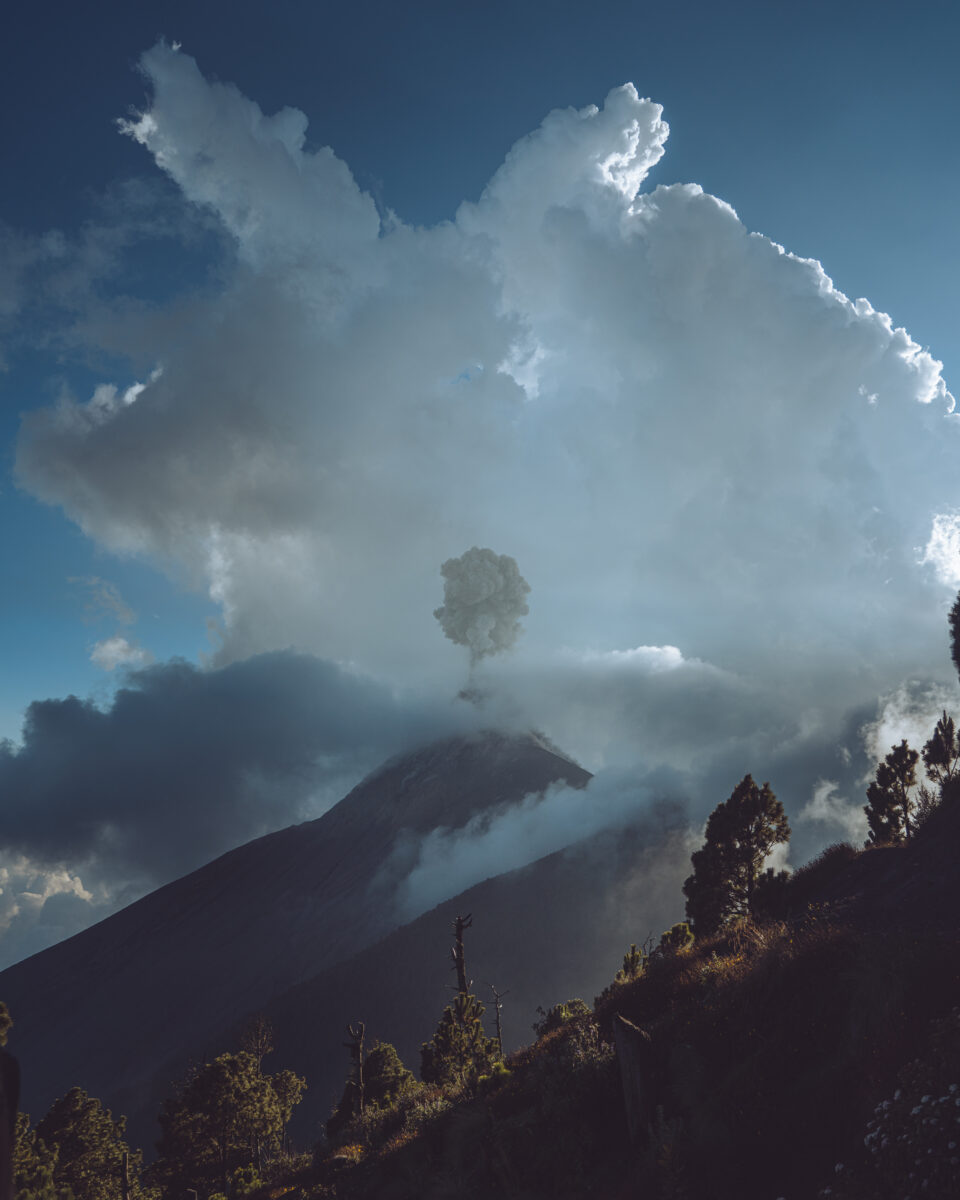
Let the eruptions begin!
Anything else?
I’d recommend trekking poles. I’m a huge proponent of trekking poles as they help protect your knees. They also allow you to better control your pace on a steep descent, as well as potentially save you in the event of a slip and fall.
Handmade walking sticks are available for rent for Q10 per stick, per day from most operators, as well as from a small shop about thirty minutes into the climb, but they’re just not the same as trekking poles in my opinion.
The shop also sold snacks and drinks, but it was closed when we hiked due to COVID so neither of us got a stick.
Some people also like to bring personal hygiene wipes, but it’s only one night so I skipped them. If you do, just be sure to bring something that’s completely biodegradable as regular “flushable wipes” contain plastic and can’t be left on the volcano. I like SURVIVEWARE Biodegradable Wet Wipes.
Then of course I brought my camera. Trust me, the views up top are beautiful. You can’t go wrong with bringing a camera.
The hike itself will push you!
The steep hike is a pretty solid trudge with not nearly enough switchbacks. There are stretches where it’s just straight up. Those are always the most challenging.
While I was there, we also ran into points where the trail had washed out, making it quite narrow at times. This is a case in point for why trails shouldn’t go straight up.
You’ll be able to get a good rest at several points along the way, most notably, at a designated camp about halfway up. There were rangers here as well as a dog that just plopped down on top of my bag and didn’t want to get up. What can I say, Osprey does make some incredibly comfortable bags.
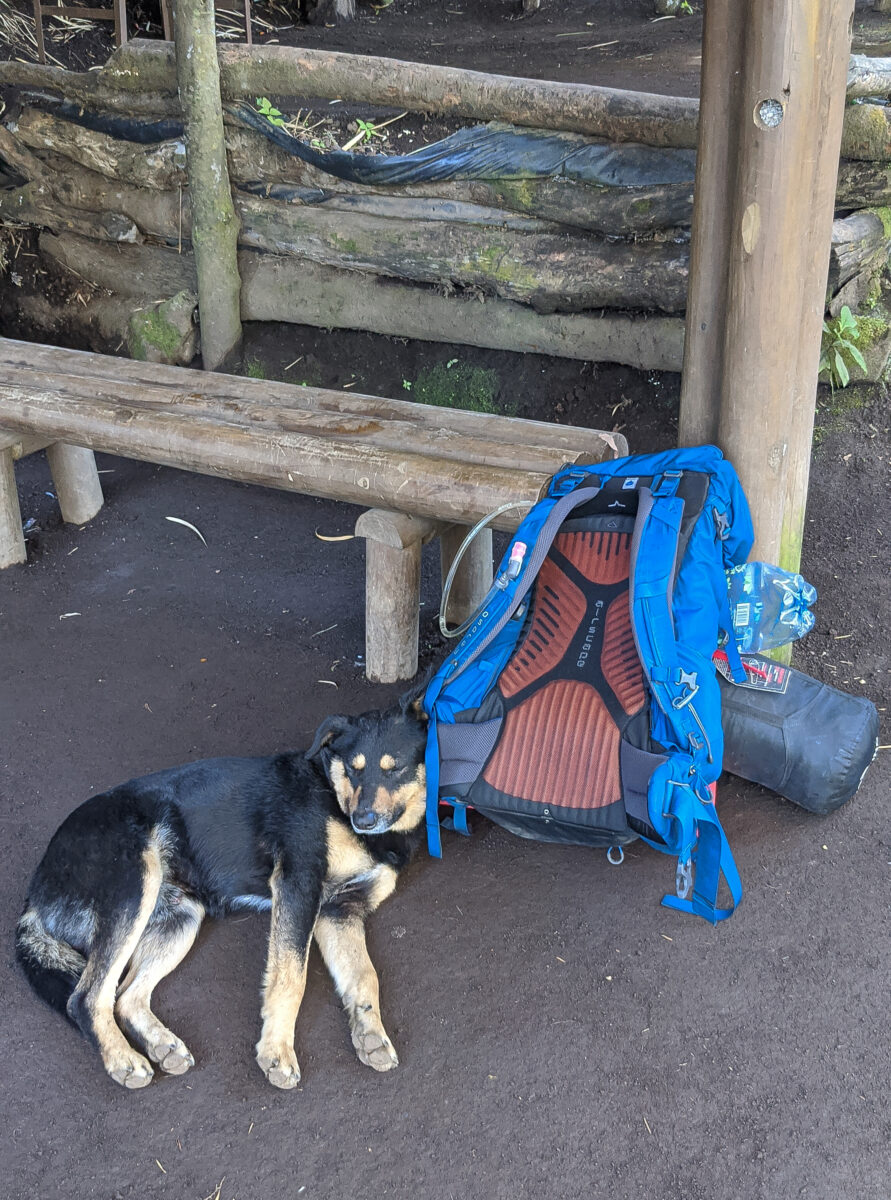
A random dog catching some ZZZs with my bag as a pillow.
Sounds like an explosion!
Eventually, things do level out a bit as you near the upper campsite and begin to wrap around the volcano, rather than climb it.
It’s now that you’ll hear it, well before you see it. The abrupt BOOM of Volcan de Fuego.
See, while Volcan de Acatenango may be dormant, Volcan de Fuego erupts around every 15- 20 minutes with a thunderous roar that may catch you off guard the first time you hear it.
Eruption sizes vary but you’ll be able to spot the larger ones filling the sky well before the sound reaches you.
After staring in awe at the expanding ash cloud above Fuego, it was time to get busy with camp.
Our camp was pretty primitive, especially when compared with the other better-maintained camps.
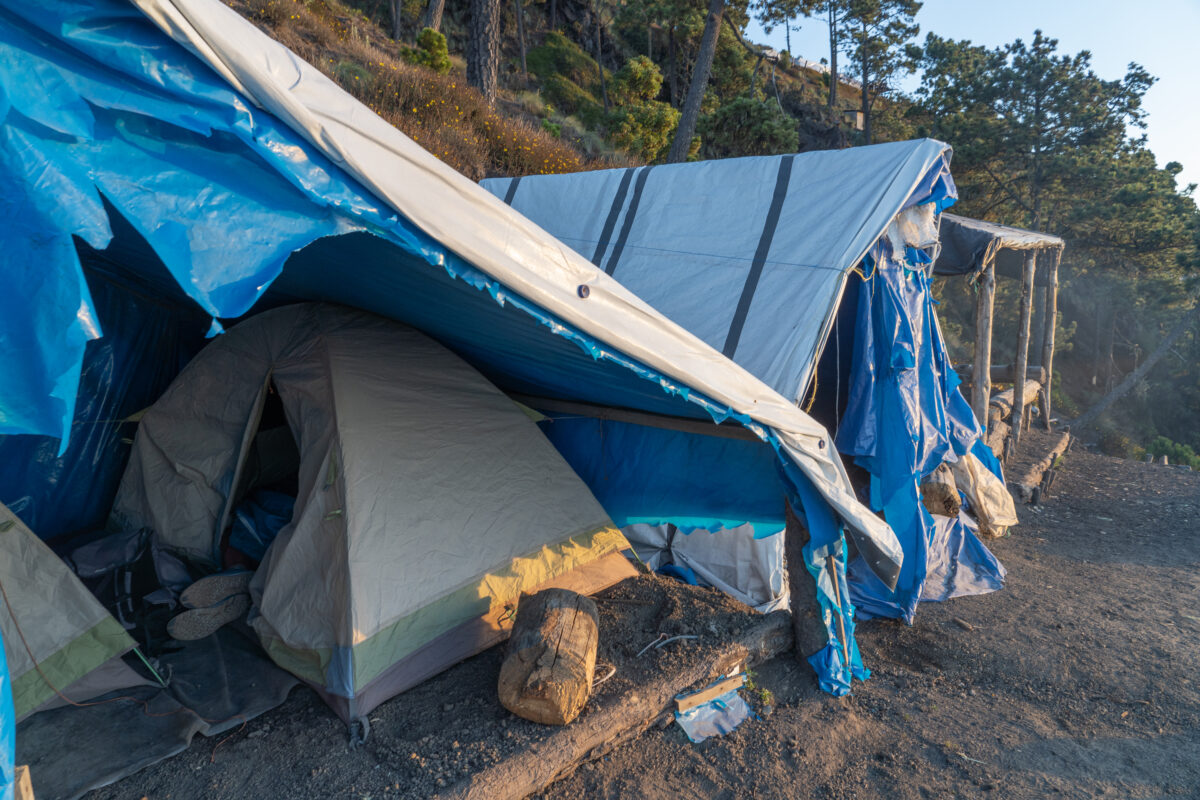
My camp.
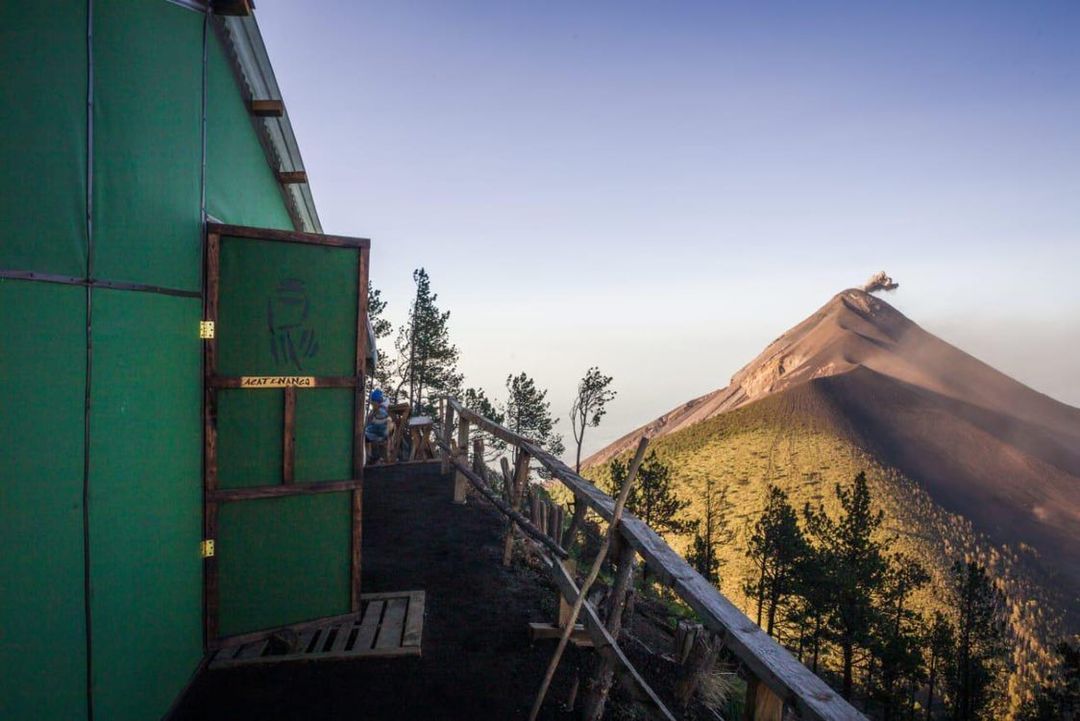
Due South Travel’s Camp. Which do you prefer?
Luckily, we were at least able to pitch our tent beneath a tarp, because volcano dust gets all over everything!
Darkness fell and brought with it food and one of the most spectacular views.
The sight of an exploding volcano during the day is impressive, but at night it’s just magical. That’s because during the day you can’t see any lava, only the billowing ash, so seeing it erupt at night is like seeing it with a whole new set of eyes. I immediately started setting up my camera for some long exposures to catch an eruption in action.
I don’t do a lot with long exposures, but they are fun once you get the hang of them.
Dinner was simple. Spaghetti, bread, and hot chocolate… boy, did I devour that fast.
It varies, but we carried our own meals which were provided pre-prepared by the operator.
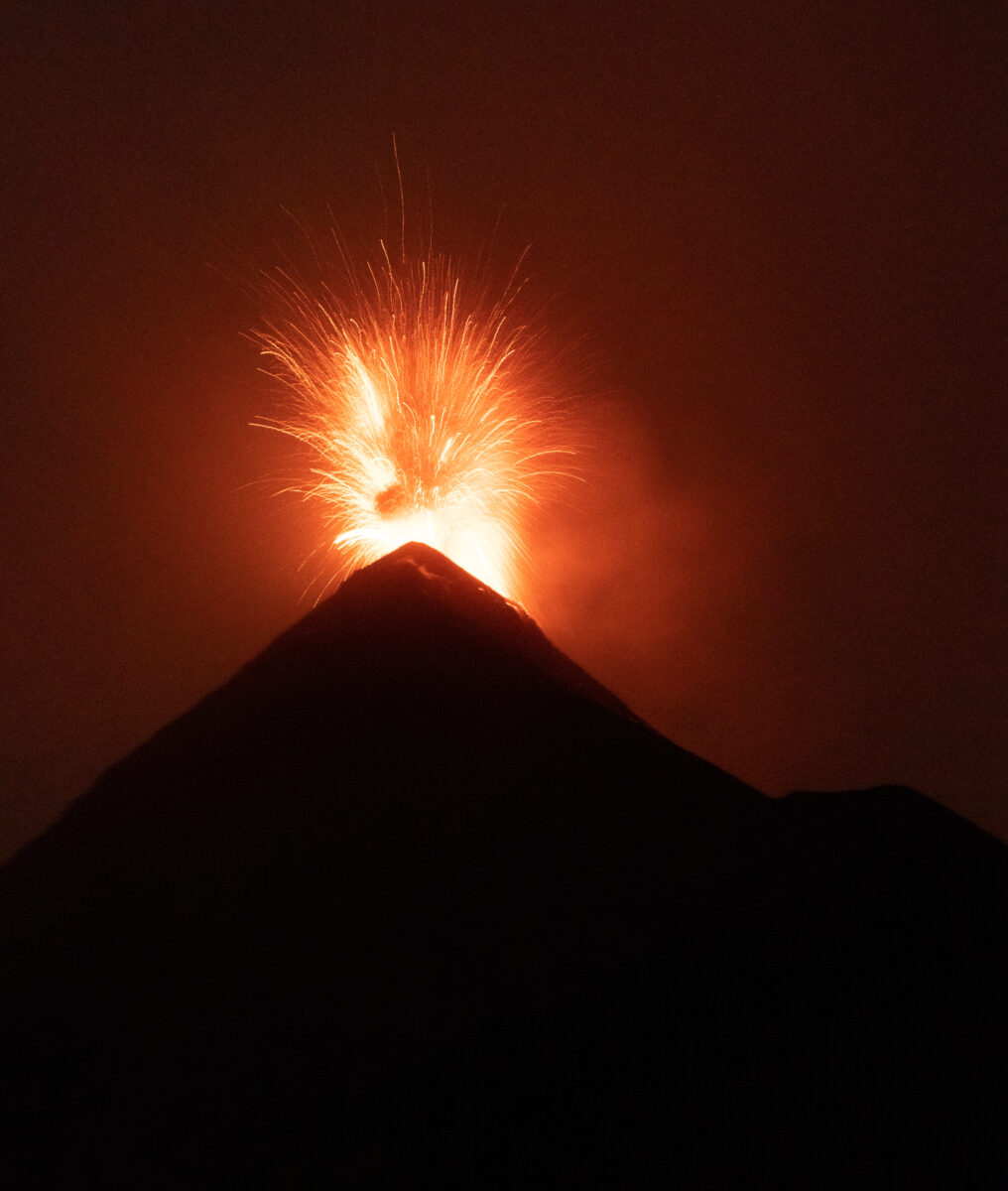
An erupting Volcan de Fuego looks completely different at night!
Early to bed, extra early to rise.
You may be at the camp at this point, but if you want to continue up another hour to the summit for sunrise, you’ll need to be up at 4:00 AM. This gets real steep and you’ll see plenty of others as the scattered campsites converge.
Several people may be crying (I’m not judging.) because at this point, although you won’t be carrying your full pack, you’ll be in the start of muscle breakdown. You know that soreness you get the day after working out for the first time in months? Well, get ready, cuz it’s a-comin.
Not everyone went all the way up, and between you and me, the sunrise probably looks about the same from both locations. This was more just about finishing the hike to me. And refusing to accept defeat.
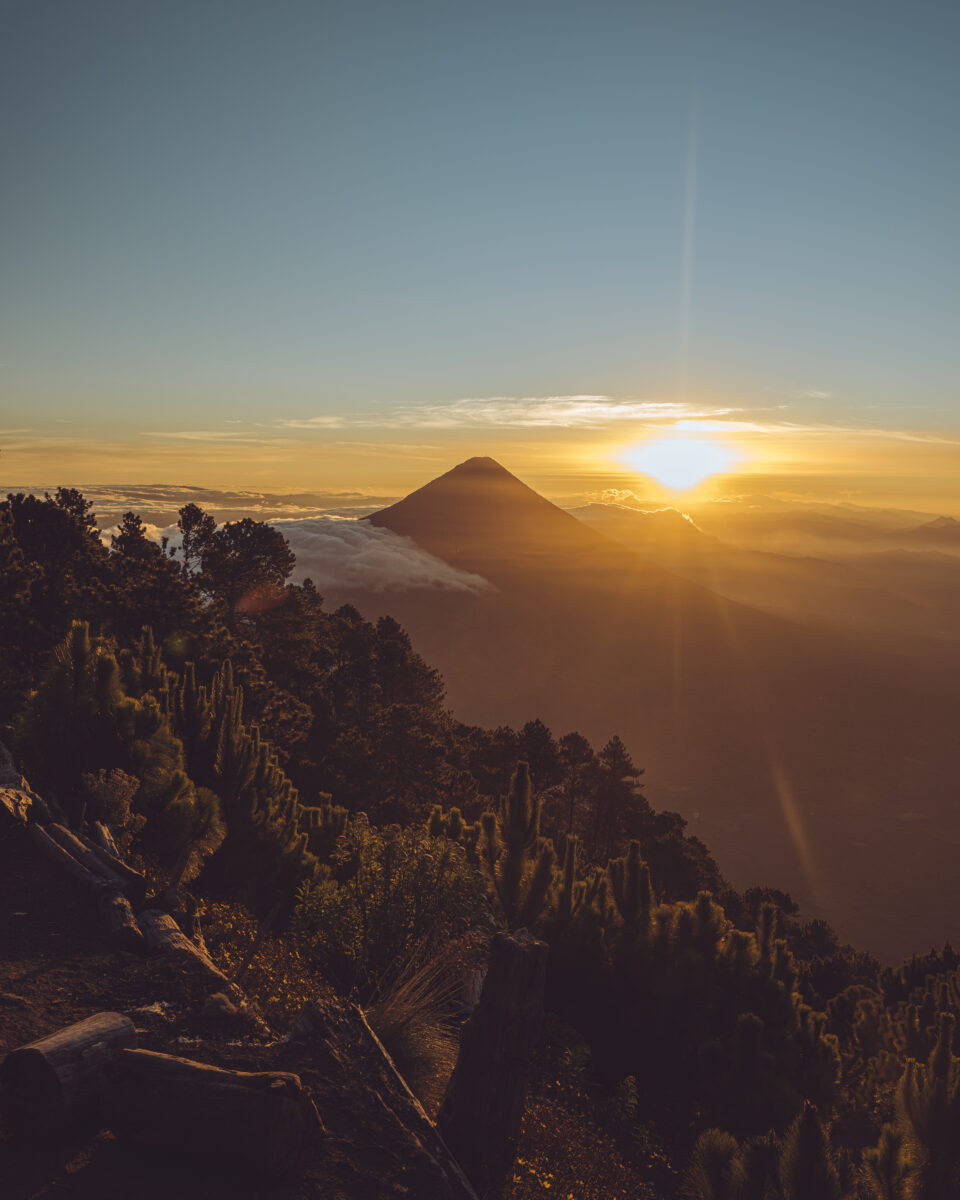
Good morning!
Climbing down is the easy part, right?
After breakfast, if all goes according to plan, the descent is going to take approximately two to three hours and you’ll make it back to Antigua at around 1:00 PM.
Nothing ever goes to plan though!
I consider myself to be in good shape. This isn’t a humble brag or anything, but I hit the gym five days a week and do a lot of cardio on top of that.
That cardio didn’t do JACK for hiking!
Let me tell you, by the time we reached the steep section of the descent, my legs were on fire!
I hadn’t hiked in a while so by the time I got to the bottom, I was feeling it. I will say I never sat down though! Historically, jarring/steep downhill descents have never been my friend. I have long legs so they slaughter my knees. It also didn’t help that I was carrying two bags, but more on that below.
Remember when I said trekking poles would have been helpful? They would have been a game-changer.
It certainly wasn’t the most pleasant descent, but I’m sure I’ll be doing it again soon enough on another volcano.
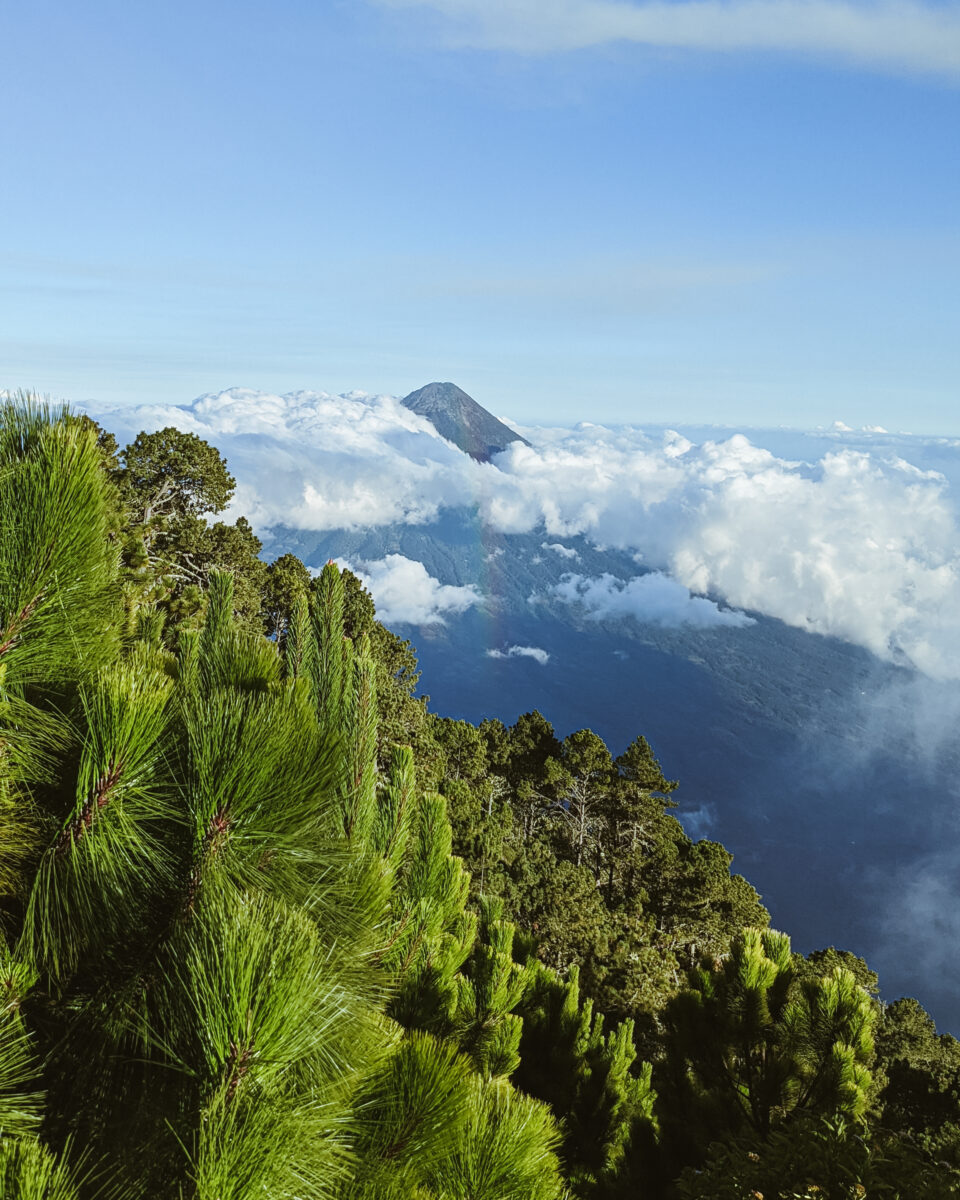
Could never tire of this view!
Remember, the mission comes first.
On any hike, especially one where the outcome is dictated by the group as a whole, the mission comes first. Remember this. Egos need to be kept in check, as there is no room for them on a team. People invest a lot of time, money, and mental preparation into these activities.
Unfortunately, ego was a major issue during my climb. There was a simple solution, let the team help. If you’re struggling to the point where you’re threatening to turn around and quit, accept help when it’s offered.
Wouldn’t you rather finish hiking Volcan de Acatenango with a little help than quit and not finish at all?
Well, we almost didn’t make it to the top. We nearly had to turn around because quitting was somehow preferable to letting someone else help carry a bag.
“Just let me carry your bag for a bit.”
The guide and I both began offering to help carry their bag almost from the start. Each time, we were met with a sharp rebuttal, followed by a lecture about their pride and independence.
After multiple attempts, it wasn’t until the, “F* You. I’m done, I’m turning around” break (which would have meant everyone would have had to turn back) that I was able to dart in and grab the bag off the ground… while being yelled at.
I didn’t want to do it that way, but as you can probably guess, the momentum of the group pulled a complete 180. The pace picked up, all complaining stopped, smiles returned, and we reached the camp with little difficulty. Help isn’t always a bad thing.
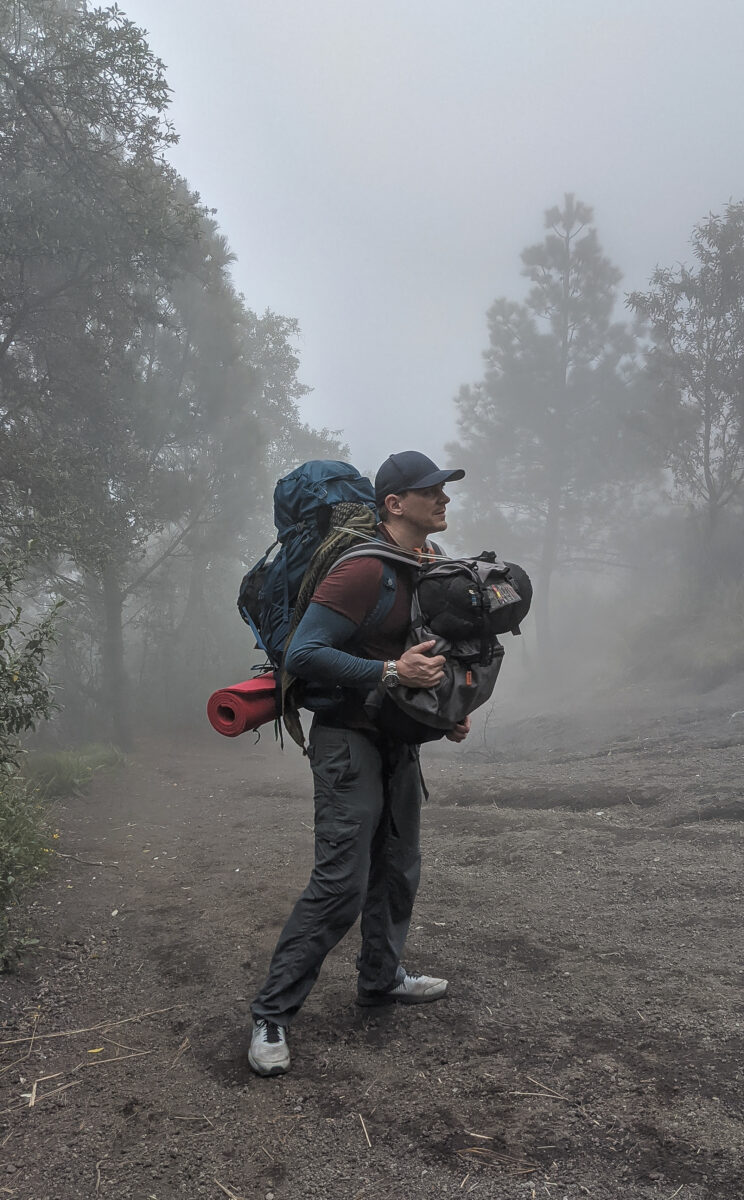
Double fisting.
Yeaahh… there was that one time…
Now, before you call me a hypocrite because I wouldn’t let a porter take my bag while I was suffering from early stage acute mountain sickness (altitude sickness) on Mount Kilimanjaro, I knew our camp was only about twenty minutes ahead.
Everyone else was already in camp so nobody was waiting on me, and not once was this any threat to the group’s completion. I also never once considered turning back on Kilimanjaro. The only way that would have happened would have been if they needed to strap me to a board and carry me down.
You’re hiking a volcano! Is it safe?!
Well, it’s like you said, you’re climbing a volcano. Can that ever be 100% safe?
Luckily, Acatenango is considered to be dormant with the last two eruptions having occurred in 1972 and at some point in the 1920s.
Volcan de Fuego, on the other hand, which erupts every fifteen to twenty minutes, is known to occasionally experience large eruptions with the most recent having occurred on September 23, 2021, about a year after I was there.
This, however, was no match for the eruption on June 3, 2018, which tragically killed at least 200 people, but probably closer to 500, and wiped the small village of San Miguel Los Lotes off the map.
Now, I’m not trying to scare you. Remember, you are on a completely separate volcano, but these are still volcanos, and mother nature doesn’t care about your plans, so never say never.
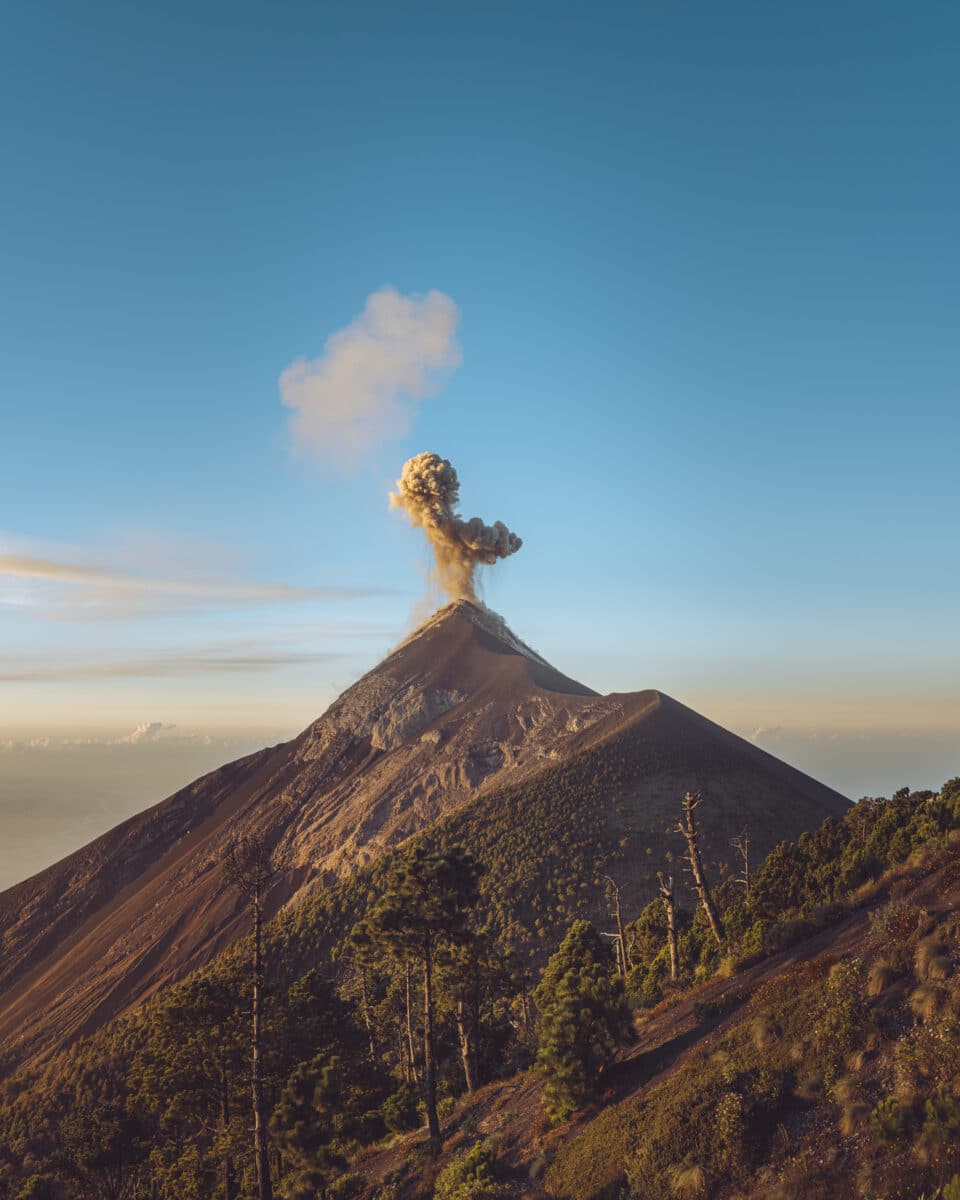
See that shoulder on the right side of Volcan de Fuego? That’s the point you’re able to hike up to.
Yes, you can hike Volcan de Fuego too.
Should you wish to get a little closer than only hiking Volcan Acatenango, there are options that combine both volcanos. You won’t be able to go anywhere near the top of Fuego, and you can’t camp on it, but you’ll still be closer.
This will cost you an additional Q300 for one person, but if more than one decides to go, it’s only Q200 per person. Don’t worry, you can wait until you’re up top before deciding.
Best time to hike Volcan Acatenango
The best time for hiking Volcan Acatenango would be during Guatemala’s dry season which runs from November to April. This will give you the best chance of good, dry weather as hiking in the rain is never the most pleasant thing to do.
So what do you think about hiking Volcan Acatenango? Is this something you would like to try? Seeing the force of an erupting volcano is truly a unique experience!
DID YOU ENJOY THIS ARTICLE? PIN IT!
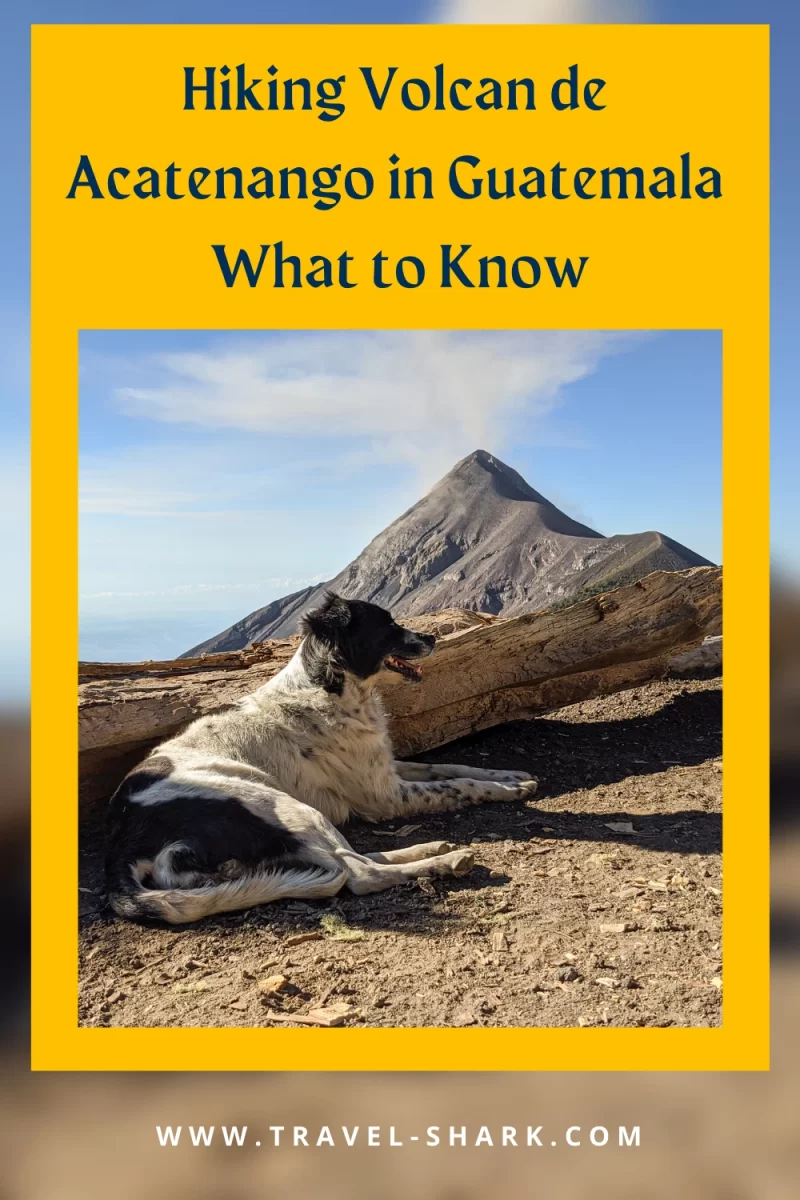

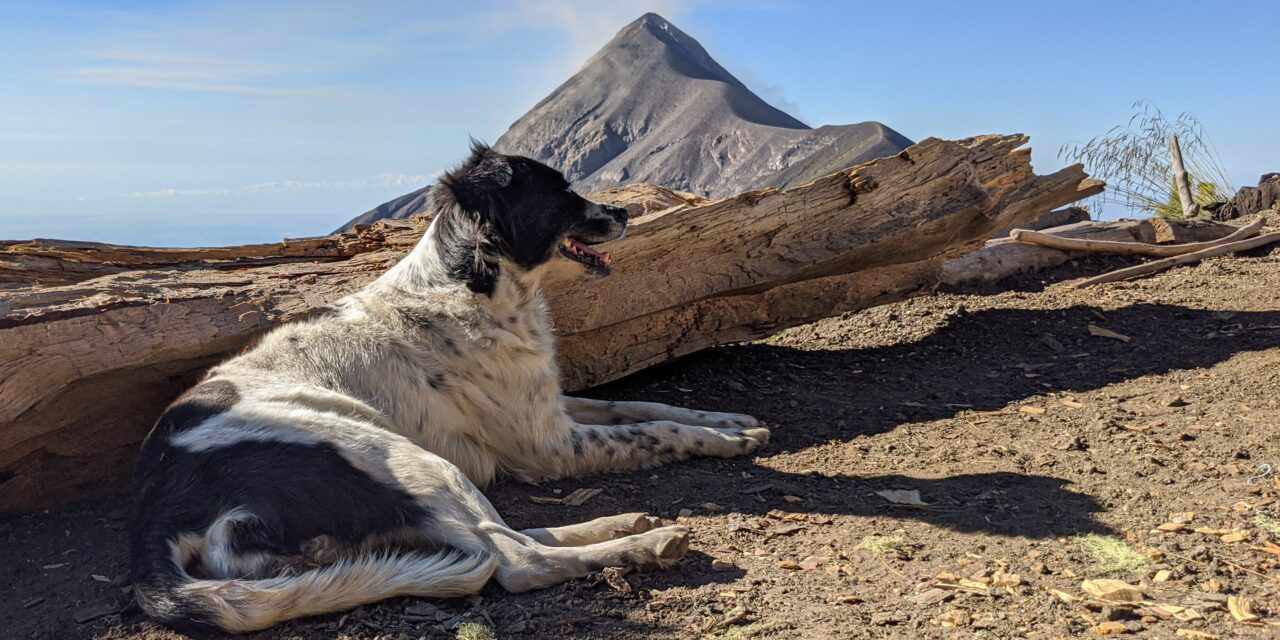
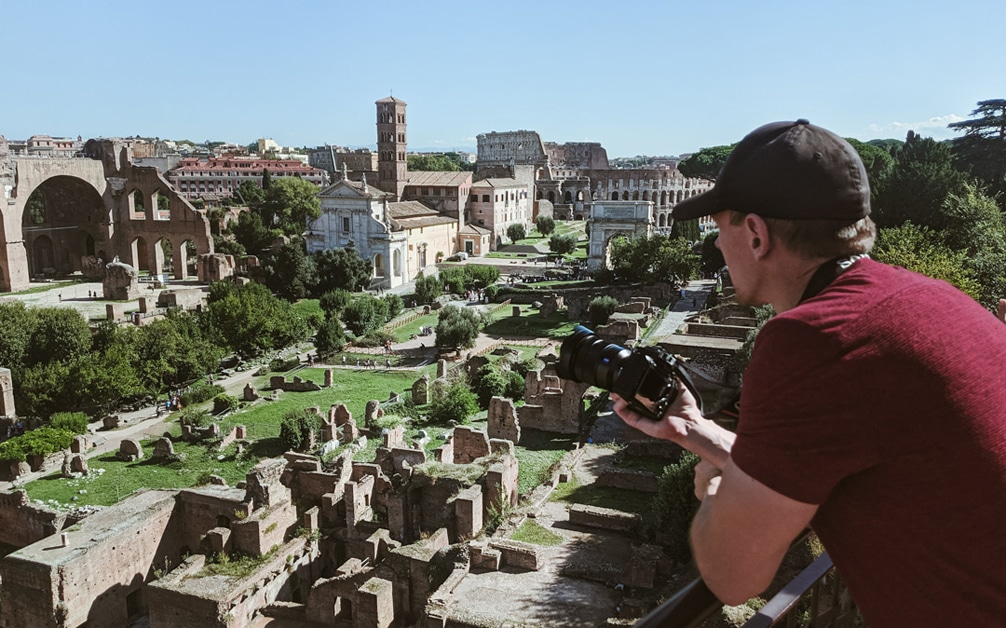
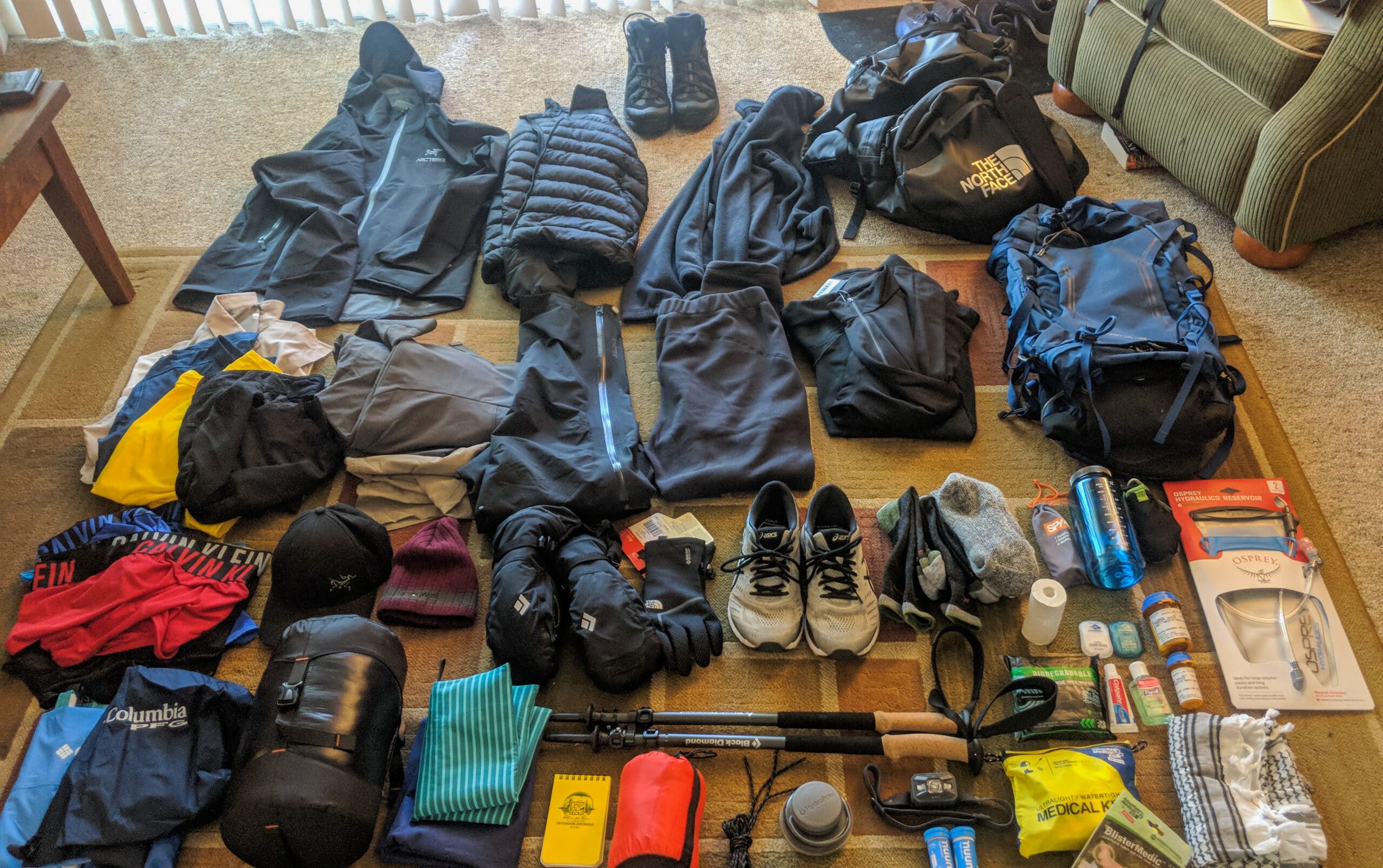
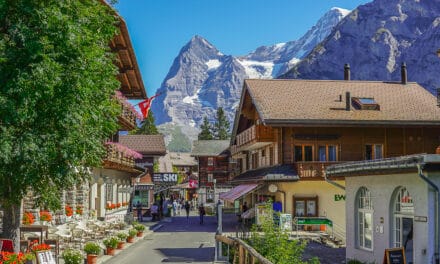
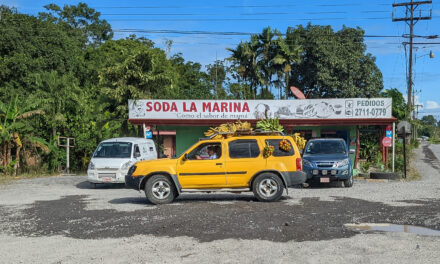

Volcan Acatenango is breathtaking! It is a goal of mine to eventually hike it but I have to become more experienced. I feel like I am not quite there yet. I enjoyed reading through your experience with it though and I felt as if I was part of your great adventure. Do you share pictures of your various travels on Instagram?
It really was breathtaking! You should be fine giving it a try, it is difficult, but not in an experience type of way. And I do! @fakehendo though admittedly, I’ve been a little slow on my updates as of late because I’ve been focusing on the writing.
[…] has since been confirmed by my friend at Due South Travels that ATI Divers is once again fully […]